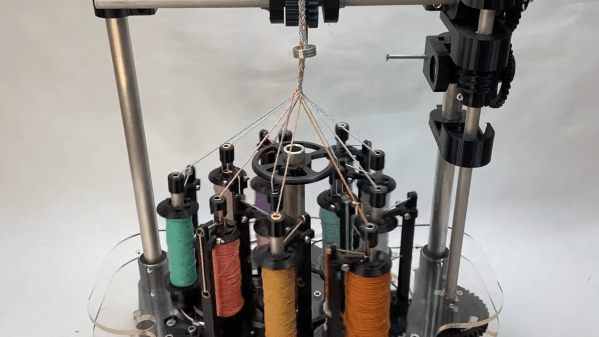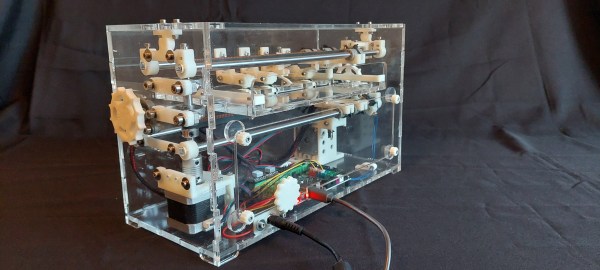If there’s something more fascinating than watching cleverly engineered industrial machines do their work, we don’t know what it could be. And at the top of that list has to be the machines that do braiding. You’ve probably seen them, with spools of thread or wire dancing under and around each other in an endless ballet that somehow manages to weave a perfect braid. It’s kind of magical.
For those who haven’t seen such a thing, now’s your chance, with this twelve-spool braiding machine. The building methods that [Fraens] used — mainly 3D printing and laser-cut acrylic — make the workings on this machine plain, even to those of us who never learned to manually braid even three strands. It’s far easier to understand by watching the video below than by trying to describe it, but basically, each vertical supply spool runs along a continuous track around a central point by a series of six meshed gears, passing under each other as they progress around the carousel and forming the braid.
There are a ton of details that go into making this work. Chief among them is the thread tensioning mechanism, which is a lever arm and spring-loaded axle that lives at the very center of each spool. The gears that form the inside-outside tracks are quite clever too, as are the worm-gear-driven takeup reel and output tensioner. We also appreciated the gate used to load the spool carriers into the track.
We can recall a couple of braiding machines before, including this one made entirely from Lego Technics.
Continue reading “3D Printed Machine Shows How Braiding Is Done”

















